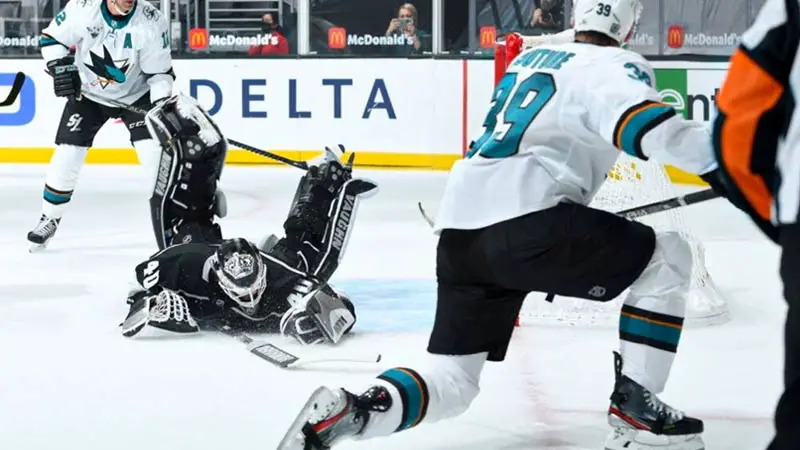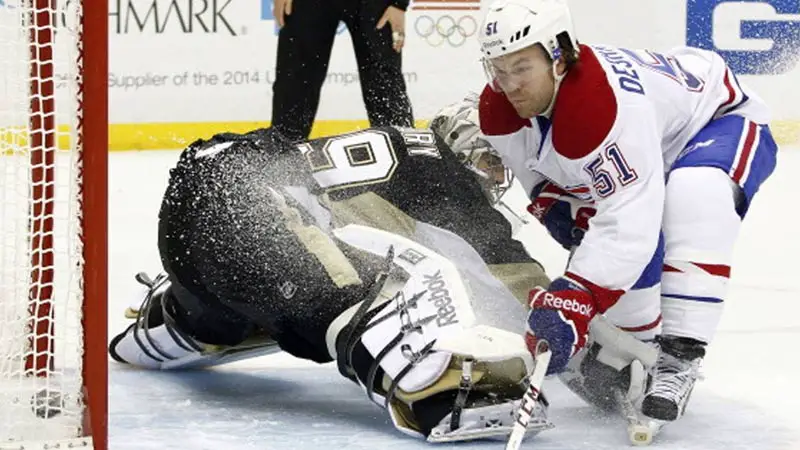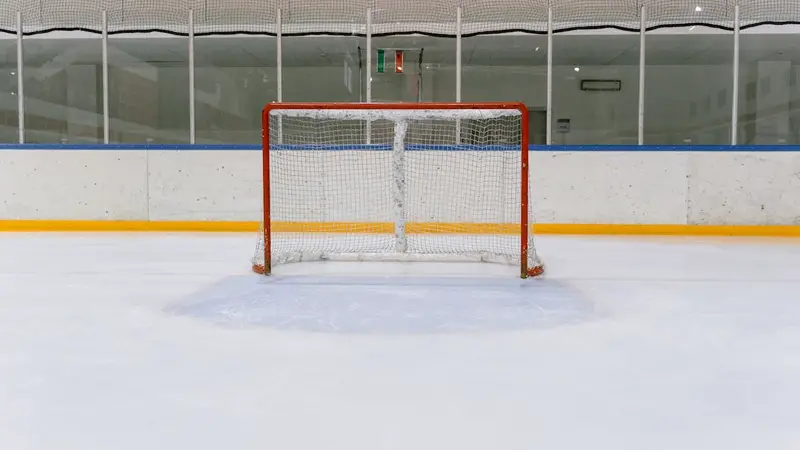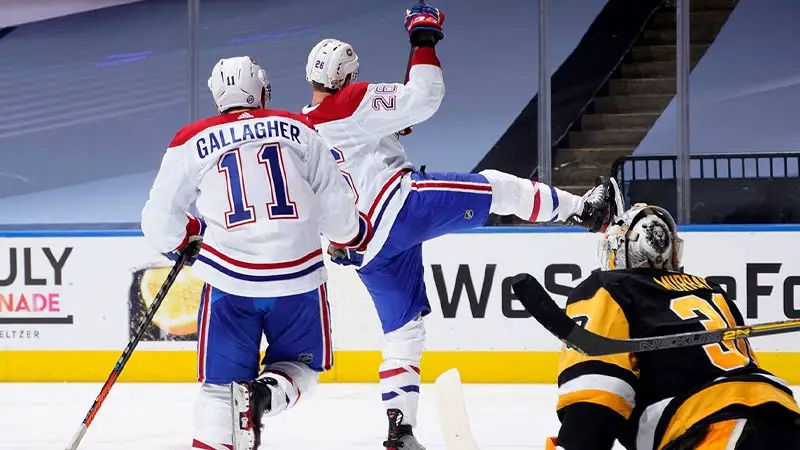In the fast-paced world of hockey, the concept of a delayed penalty adds a layer of strategy and excitement to the game. When a team commits an infraction, the referees don’t immediately halt play.
Instead, they signal a delayed penalty, allowing the non-offending team to continue until they gain control of the puck.
This unique rule opens the door to strategic maneuvers, as teams can pull their goaltender for an extra attacker, creating a power play scenario.
In this blog post, we delve into what is a delayed penalty in hockey, exploring their impact on gameplay, the strategies teams employ, and how this rule contributes to the dynamic nature of hockey. So, stay sharp.
What Is a Delayed Penalty in Hockey?
In hockey, a delayed penalty occurs when an infraction is committed by one team, but the referees do not immediately stop play.
Instead, they allow the offending team to maintain possession of the puck until a player from the opposing team gains control.
Once the non-offending team gains control, the referees blow the whistle to stop play, and the penalized player then serves their penalty. This rule encourages continuous play and adds strategic elements to the game.
The delayed penalty system provides the non-offending team with an opportunity to pull their goaltender for an extra attacker, creating a power play situation.
It adds an interesting dynamic as the attacking team aims to capitalize on the delayed penalty, while the defending team works to regain possession and nullify the impending power play.
What Causes a Delayed Penalty in Hockey?
In hockey, a delayed penalty occurs when an infraction is committed by one team, but the referees refrain from immediately stopping play.
Instead, the offending team continues to play until the non-offending team gains control of the puck. Several reasons can lead to a delayed penalty:
Possession Retained by Offending Team
The referees allow the offending team to keep possession of the puck until the non-offending team gains control.
This ensures that the penalized team has an opportunity to score, creating a strategic and dynamic element to the game.
Extra Attacker for the Non-Offending Team
Since play continues after the infraction, the non-offending team often pulls their goaltender to introduce an extra skater.
This aggressive move aims to capitalize on the delayed penalty, creating a power play situation and increasing the chances of scoring.
Strategic Advantage for Non-Offending Team
The delayed penalty rule adds a layer of strategy to the game.
The non-offending team can focus on setting up a play and positioning players effectively to make the most of the upcoming power play when the penalty is enforced.
Encourages Controlled Aggression
Players must balance the need for aggressive play with the risk of penalties.
The delayed penalty rule promotes controlled aggression, as players understand that an infraction if committed, may result in a disadvantageous power play for the opposing team.
Fast-paced and Continuous Action
Delayed penalties contribute to the fast-paced nature of hockey.
The game doesn’t stop immediately after an infraction, maintaining the flow and intensity, with both teams actively engaged until the non-offending team gains control and the penalty is officially called.
Referee Signals for Delayed Penalties

In hockey, effective communication between referees and players is crucial for maintaining fair play.
Referees employ specific signals to indicate a delayed penalty, alerting both teams and fans to the impending call. Here are the key referee signals for delayed penalties:
Raised Arm
When a referee observes an infraction, they immediately raise one arm to signal that a penalty has been committed.
This signifies that a delayed penalty is in effect, and play will continue until the non-offending team gains control of the puck.
Pointing to the Offending Player
To identify the player responsible for the infraction, the referee may point directly at them while maintaining the raised arm.
This helps players, coaches, and spectators understand which team will be penalized once play stops.
Verbal Communication
Referees often accompany the raised arm and pointing gesture with verbal communication, such as announcing the jersey number or name of the offending player.
This ensures clarity and transparency in the enforcement of penalties.
Delayed Whistle
As play continues, the referee refrains from blowing the whistle immediately after detecting the infraction.
Instead, they wait until the non-offending team gains control of the puck. This delay allows the team with the penalty to maintain possession briefly.
Official Whistle and Arm Pointed
Once the non-offending team gains control, the referee blows the whistle, points at the offending player, and signals the specific penalty.
This marks the end of the delayed penalty phase, and the penalized player proceeds to the penalty box.
Understanding these referee signals is essential for players, coaches, and fans to follow the game’s flow and comprehend the unfolding dynamics during delayed penalties in hockey.
Impact of Delayed Penalties in Hockey

The implementation of delayed penalties in hockey introduces a strategic and dynamic element to the game, influencing the flow and outcomes.
Here are several impacts associated with delayed penalties:
Strategic Advantage for Non-Offending Team
The delayed penalty rule provides the non-offending team with a strategic advantage. Knowing that a penalty is imminent, they often pull their goaltender for an extra skater, creating a power play scenario.
This strategic move aims to maximize the chances of scoring during the upcoming advantage.
Continuous Play and Fast-Paced Action
The delayed penalty rule contributes to the fast-paced nature of hockey. Play doesn’t stop immediately after an infraction; instead, both teams remain actively engaged until the non-offending team gains control.
This continuous play enhances the excitement and intensity of the game.
Increased Scoring Opportunities
With the non-offending team enjoying an extra attacker, the delayed penalty often results in increased scoring opportunities.
Teams capitalize on the power play to create offensive plays and attempt to score goals before the penalized player joins the penalty box.
Controlled Aggression by Players
Players must exercise controlled aggression to avoid penalties that could lead to a disadvantageous situation for their team.
The knowledge of a delayed penalty encourages players to play aggressively but with a level of restraint to prevent infractions that could impact the game negatively.
Impact on Penalty-Killing Strategies
For the team committing the penalty, the delayed penalty alters their defensive strategy.
They may focus on preventing the opposing team from gaining control of the puck or disrupting their offensive plays.
The penalty-killing unit must be well-coordinated to mitigate the potential damage during the power play.
Strategy to Avoid a Delayed Penalty in Hockey

To minimize the risk of incurring a delayed penalty in hockey, teams and players must adopt strategic approaches to maintain disciplined play.
Here are several strategies to avoid delayed penalties:
Emphasize Discipline and Training
Establishing a culture of discipline and emphasizing proper training are fundamental to avoiding unnecessary penalties.
Coaches should focus on teaching players the importance of controlled aggression and avoiding actions that may lead to infractions.
This includes proper stick positioning, body checks, and defensive techniques.
Improve Communication and Awareness
Enhanced communication among teammates is crucial to avoid misjudgments that could result in penalties.
Players should be aware of their surroundings, communicate effectively on the ice, and be mindful of their actions to prevent unintentional infractions.
This includes maintaining spatial awareness to avoid interference or tripping.
Adapt Defensive Strategies
Coaches can implement defensive strategies that prioritize smart positioning and effective stick-checking over physical play that may result in penalties.
Teaching players to anticipate offensive moves, intercept passes, and disrupt plays without resorting to aggressive physical contact helps maintain a strong defense while minimizing the risk of penalties.
Practice Penalty Kill Scenarios
Simulating penalty-kill situations during practice allows teams to refine their strategies for defending against power plays.
By understanding how to effectively kill penalties, players can focus on maintaining discipline and avoiding unnecessary infractions that may lead to delayed penalties.
Encourage Mental Toughness
Instill a sense of mental toughness in players to help them maintain composure, especially in high-pressure situations. Encourage players to stay focused, control emotions, and resist retaliatory actions.
A mentally resilient team is better equipped to avoid penalties and stay composed during a game.
By implementing these strategies, teams can reduce the likelihood of incurring delayed penalties and maintain a competitive edge.
FAQs
What is a delayed penalty in hockey?
A delayed penalty in hockey occurs when a team commits an infraction, but play continues until the non-offending team gains control of the puck.
The referees signal the penalty by raising their arms, and the penalized team maintains possession until the play stops.
Why is there a delayed penalty rule in hockey?
The delayed penalty rule is designed to add a strategic element to the game. It allows the non-offending team to continue to play, potentially pulling their goaltender for an extra attacker during the delayed penalty.
This enhances the excitement and strategic complexity of the game.
How does the delayed penalty impact gameplay?
The delayed penalty rule increases the strategic options for the non-offending team.
They can capitalize on the delayed penalty by creating a power play scenario with an extra attacker, leading to more scoring opportunities. It also maintains a fast-paced and continuous flow of action.
When does the delayed penalty end?
The delayed penalty ends when the non-offending team gains control of the puck. At that point, the referees blow the whistle, and the penalized player serves their penalty.
This ensures that the penalized team has a brief opportunity to play with possession before the penalty is enforced.
How can a team avoid a delayed penalty in hockey?
To avoid a delayed penalty, teams should focus on disciplined play, proper training, and effective communication.
Coaches can implement defensive strategies that prioritize smart positioning over physical play.
Encouraging mental toughness and practicing penalty kill scenarios can also contribute to minimizing unnecessary infractions.
Wrapping Up
In the realm of hockey, understanding the dynamics of delayed penalties is key to appreciating the strategic depth of the sport.
This rule transforms moments of potential disadvantage into opportunities for strategic brilliance.
As teams navigate the challenges of avoiding penalties and capitalizing on the delayed call, the game evolves into a dynamic and thrilling spectacle, showcasing the blend of skill, discipline, and strategy that defines hockey.
The delayed penalty rule, with its nuanced impact on play, stands as a testament to the intricacies that make hockey a captivating and ever-evolving sport. Thank you so much.








James Felix